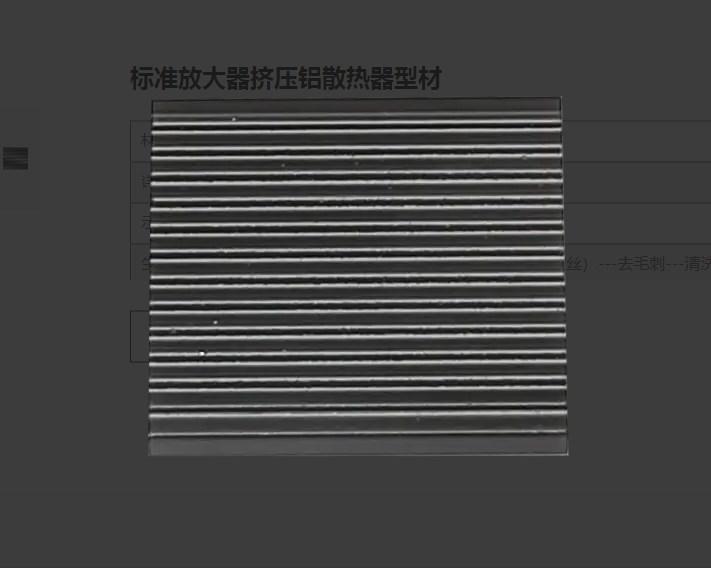When it comes to thermal management solutions, the choice between Aluminum Profile Heatsink and copper radiators is a common dilemma faced by engineers and designers. Both materials have unique properties that make them suitable for different applications, but the Aluminum Profile Heatsinks have emerged as a popular choice due to several distinct advantages they offer over copper radiators.
First and foremost, the cost-effectiveness of Aluminum Profile Heatsinks is a significant factor in their favor. Aluminum is more abundant and less expensive than copper, which translates into lower production costs for heatsinks. This economic advantage is particularly important in mass production scenarios where the cost savings can be substantial. Moreover, the lightweight nature of aluminum means that Aluminum Profile Heatsinks are easier to handle and install, which can reduce labor costs and improve the overall efficiency of the manufacturing process.
In terms of thermal conductivity, while copper has a higher conductivity rating than aluminum, the difference is not as pronounced as one might think. Copper's thermal conductivity is approximately twice that of aluminum, but the difference is often mitigated by the design and manufacturing processes of Aluminum Profile Heatsinks. Modern manufacturing techniques allow for the creation of highly efficient aluminum heatsinks with fins and other structures that maximize surface area, which can compensate for the lower conductivity of aluminum. This design flexibility enables Aluminum Profile Heatsinks to achieve comparable heat dissipation performance to copper radiators, especially when the overall design and airflow are optimized.
Another advantage of Aluminum Profile Heatsinks is their corrosion resistance. Aluminum naturally forms a protective oxide layer when exposed to air, which prevents further oxidation and protects the material from corrosion. This property is particularly beneficial in environments where moisture or other corrosive elements are present, as it ensures the longevity and reliability of the heatsink. Copper, on the other hand, can corrode over time, especially in humid conditions, which can lead to performance degradation and the need for more frequent replacement.
The malleability of aluminum also plays a role in the manufacturing of Aluminum Profile Heatsinks. Aluminum can be easily shaped and formed into complex geometries, allowing for the creation of heatsinks with intricate designs that can fit into tight spaces or conform to the shape of the components they are cooling. This flexibility in design is not as readily achievable with copper, which is more rigid and less forgiving when it comes to forming complex shapes.
Furthermore, the environmental impact of Aluminum Profile Heatsinks is another consideration. Aluminum is more readily recycled than copper, and the recycling process is less energy-intensive. This makes aluminum a more sustainable choice for heatsinks, as it reduces the environmental footprint of the manufacturing process and the end-of-life disposal of the product.
In conclusion, while copper radiators have their place in high-end applications where the highest thermal conductivity is required, Aluminum Profile Heatsinks offer a range of advantages that make them the preferred choice for many applications. Their cost-effectiveness, lightweight design, corrosion resistance, design flexibility, and environmental sustainability make them a compelling option for thermal management solutions in a wide variety of electronic devices and systems. As technology continues to advance, the development of new manufacturing techniques and materials will likely further enhance the performance and capabilities of Aluminum Profile Heatsinks, solidifying their position as a leading choice in the field of thermal management.
